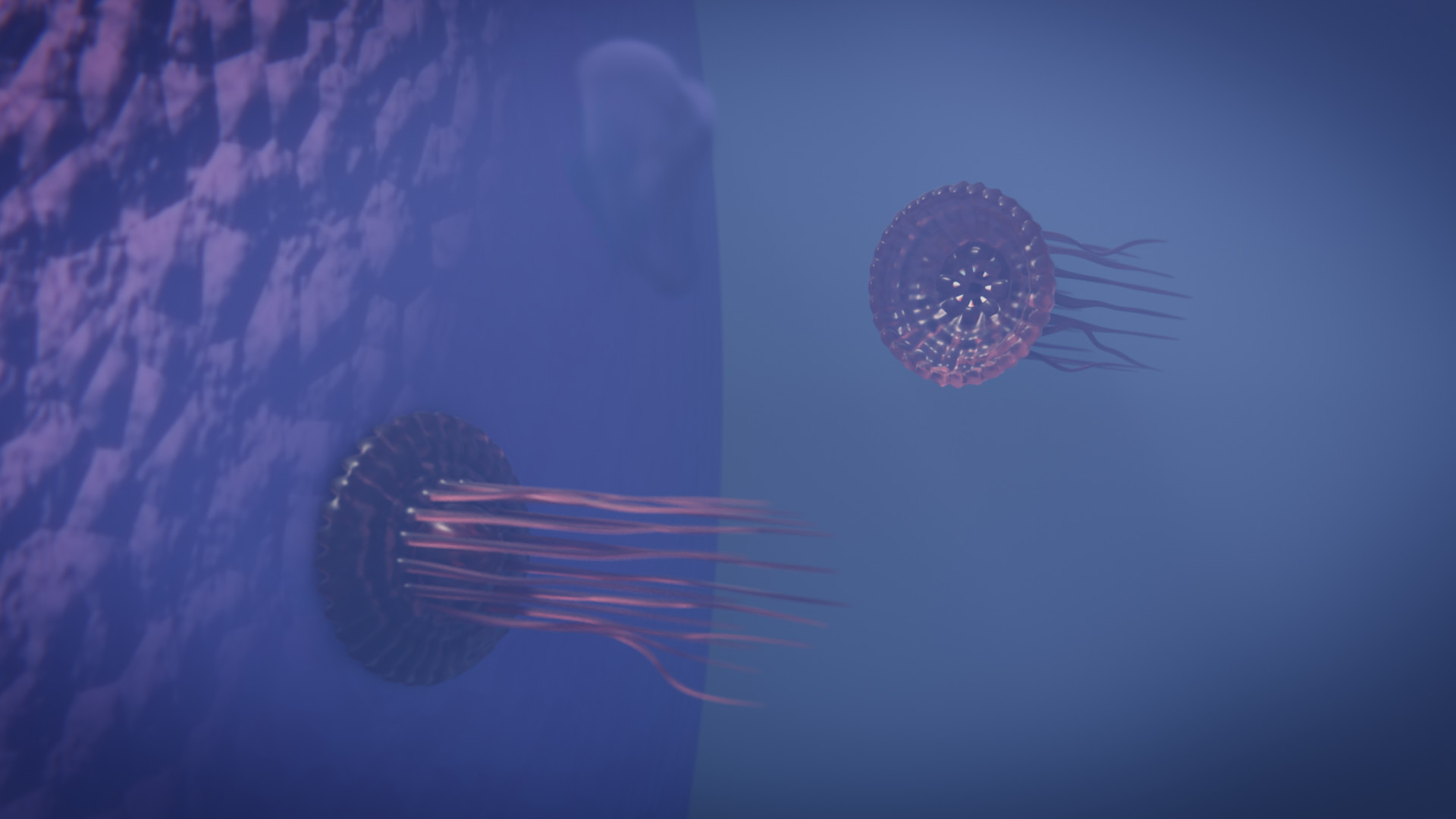Rose Comet
Rose Comets are tiny parasitic organisms who are on the cusp between being planctonic and nectonic on Almaishah 470 million years ago. They swim with their mouth facing forward, propelled by their flagella-like motive tentacles. They can latch onto much larger organisms and begin rasping away bits of flesh. Pictured are two rose comets, one attaching itself to a cage gill worm, the other having detatched, well fed and off to digest its meal. [Creature design by Squiddum]
Basic Information
Anatomy
The bell and stomach of the rose comet has become larger than its ancestor’s. To support the larger body, rose comets now possess a pseudocoel to facilitate transport of gas and nutrients. Motive tentacles have lengthened and flattened to be more efficient for swimming towards hosts. The flat surface of the motive tentacles also serves a secondary function as a gas exchange site, although there is no circulatory system to distribute the gases efficiently. The feeding tentacles have been modified for the purpose of latching onto larger organisms, and will henceforth be referred to as anchor tentacles. Each anchor tentacle is lined with chemoreceptors and mucus-secreting glands, with the latter being most abundant towards the distal tips to facilitate adhesion onto the host’s skin. The jaw tentacles have become more thick and stout, with serrations resembling a snail’s radula lining the medial side. Rose comets appear translucent with a rose-tinted colouration.
Genetics and Reproduction
Rose comets are now capable of parthenogenesis by self fertilizing their ova, producing genetically identical daughters. However, unrelated individuals may still mate together in a similar fashion to their ancestors, meeting mouth to mouth then releasing their gametes simultaneously. The fertilized eggs are left to drift with the zooplankton.
Ecology and Habitats
As part of the zooplankton fauna, rose comets are prey to a variety of small organisms as well as large filter feeders. However, the tables are turned when they manage to latch onto a host, some of which can be magnitudes larger than the parasite itself. Common hosts include phytopinnipeds, protamisanids and durospinas. They are capable of swimming against the currents to a limited degree, but only do so when in close proximity to a host.
Dietary Needs and Habits
The distal tip of the anchor tentacles are covered in a thick layer of mucus in order to adhere onto the host organism’s skin. Upon successful ‘landing’, the jaw tentacles begin rasping away at the host’s skin, shoving morsels of flesh into the stomach cavity. A mixture of enzymes and anticoagulants are secreted from the stomach to facilitate breakdown of host tissue. A fully fed rose comet may survive without food for up to 50 local days.
Additional Information
Geographic Origin and Distribution
They are found worldwide, most abundantly in warm oceans around the equator. They are currently found only within the epipelagic zone in coastal areas and open waters.
Perception and Sensory Capabilities
Their only sensory input comes from the chemoreceptors on their anchor tentacles, providing smell and touch. These direct the rose comet towards hosts and trigger the rasping response when the anchor tentacle has attached to a suitable host.
Genetic Ancestor(s)
Genetic Descendants
Scientific Name
Stephanoflagellata rosea
Origin/Ancestry
Stephenozoa
Lifespan
200 local days
Average Length
0.5 cm bell length, 2 cm motive tentacle length
Geographic Distribution
Remove these ads. Join the Worldbuilders Guild











Comments